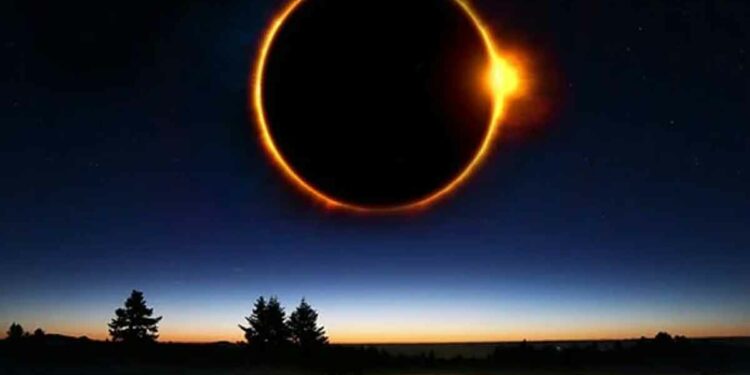Prepare for the solar eclipse on April 8, 2024, as scientists warn of potential risks. Stay informed about the dangers associated with this celestial event.
As stargazers eagerly anticipate the upcoming celestial spectacle of the total solar eclipse on April 8th, scientists are sounding a note of caution amidst the excitement. While the eclipse promises a breathtaking view for skywatchers in certain North American regions, preparations for the event are accompanied by safety concerns.
Eclipse Overview
Scheduled to grace North America on April 8th, the total solar eclipse will offer a stunning visual display for observers in 14 states, including Texas and New York. However, for Brits, the experience will be limited to a partial eclipse. According to reports from the National Aeronautics and Space Administration (NASA), the eclipse will commence in Mexico at 11:07am PDT before traversing the US and Canada, concluding on the coast of Newfoundland at 5:16pm NDT.
Road Safety Alerts
Amidst the anticipation, scientists are raising a red flag for drivers as the solar eclipse approaches. Researchers at the University of Toronto express concern over a potential surge in car accidents during the celestial event. Delving into data from the 2017 eclipse, they unearthed a troubling trend: there were over 1,000 more road fatalities across the US in the days surrounding the eclipse compared to typical periods.
Alarming Statistics
The analysis revealed a stark reality: during the eclipse timeframe, fatal car crashes occurred at a rate of approximately 10.3 people per hour, compared to the average of 7.9 people per hour. This marks a significant 31% increase in road fatalities.
Safety Precautions Advised
For those planning road trips to witness the eclipse, a word of caution is warranted. The combination of increased traffic and heightened excitement surrounding the event could potentially lead to disaster. Researchers underscore the gravity of the situation, noting that the eclipse period saw an additional crash-involved person every 25 minutes and an extra crash fatality every 95 minutes.
Factors Contributing to Increased Risk
One contributing factor to the surge in driving activity is the influx of individuals hitting the roads to reach prime viewing locations for the eclipse. It’s estimated that over 3.7 million people will travel to one of the 14 key states to witness the phenomenon. Texas, with its optimal viewing conditions, is expected to host the highest number of travelers, ranging from 270,000 to one million visitors.
Conclusion
As excitement mounts for the upcoming solar eclipse, it’s imperative for travelers to exercise caution and prioritize safety on the roads. Increased vigilance and adherence to traffic regulations can mitigate the risks associated with heightened road activity during this extraordinary event.









